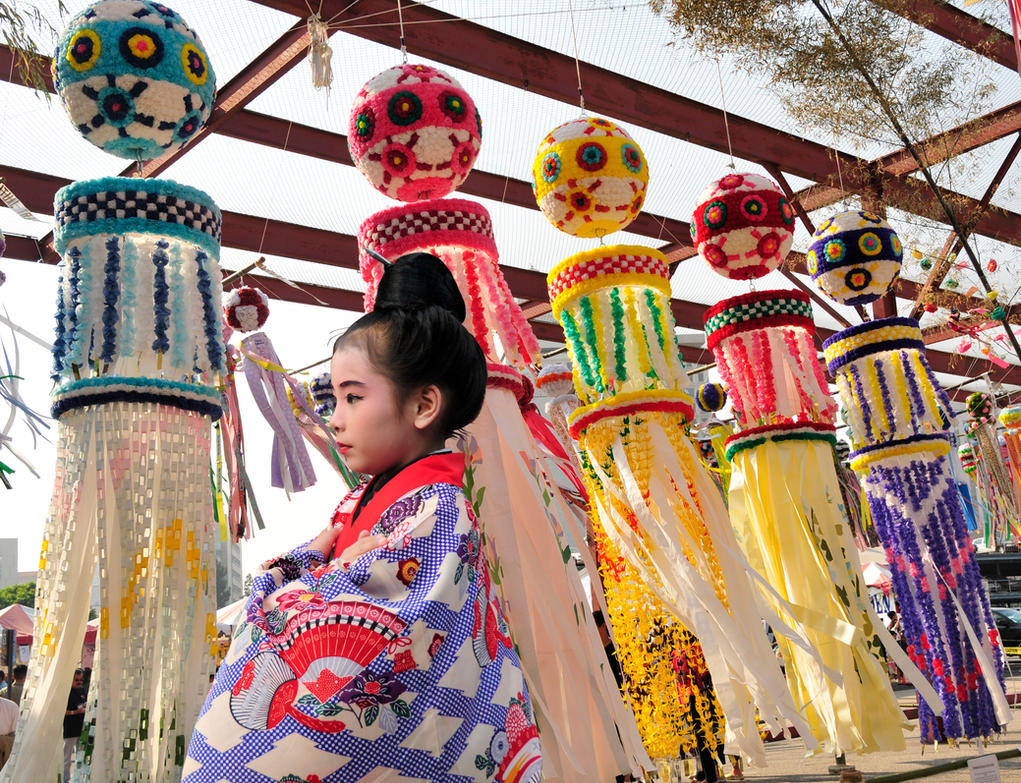
What can be more beautiful than to wore a kimono as a geisha do?!
Well, first of all, kimono is a Japanese traditional type of clothing worn by women, children and men,which literally means a "thing to wear" (ki "wear" and mono "thing"). Kimonos can be made of silk, wool, cotton, linen or synthetic material.
Nowadays, the kimono it is used on special occasions. Is it beautiful and unique in the world.
There are different types of kimono, in different colors and models.
Geisha can't be a geisha without a kimono, but men, women, children, even manga and anime character wore it too.
 |
| Married couple |
Parts:


- Dōura: upper lining on a woman's kimono.
- Eri : collar.
- Fuki: hem guard.
- Furi: sleeve below the armhole.
- Maemigoro : front main panel, excluding sleeves. The covering portion of the other side of the back, maemigoro is divided into "right maemigoro" and "left maemigoro".
- Miyatsukuchi: opening under the sleeve.
- Okumi: front inside panel situated on the front edge of the left and right, excluding the sleeve of a kimono. Until the collar, down to the bottom of the dress goes, up and down part of the strip of cloth. Have sewn the front body.
- Sode: sleeve.
- Sodeguchi: sleeve opening.
- Sodetsuke: kimono armhole.
- Susomawashi: lower lining.
- Tamoto: sleeve pouch.
- Tomoeri: over-collar (collar protector).
- Uraeri: inner collar.
- Ushiromigoro: back main panel, excluding sleeves, covering the back portion. They are basically sewn back-centered and consist of "right ushiromigoro" and "left ushiromigoro", but for wool fabric, the ushiromigoro consists of one piece.
When choosing and wearing kimono, one must take a several things to account. This is often the reason why modern Japanese women don't feel comfortable to wear kimono, since they are worried of breaking the multidimensional kimono etiquette. Several things matter:
- Wearer's Age
- Quality and Formality of Occasion
- Season
- Wearer's taste
- One's Class





















